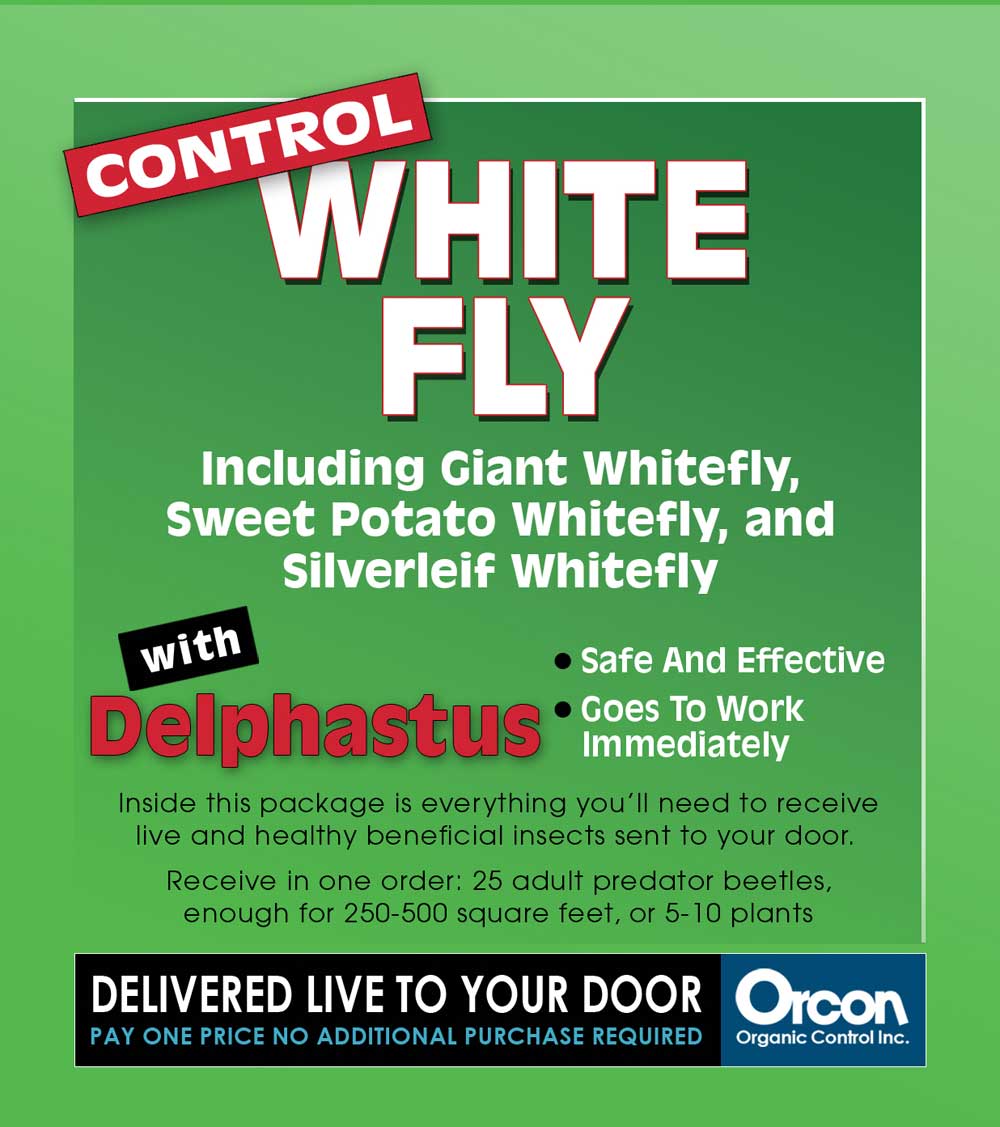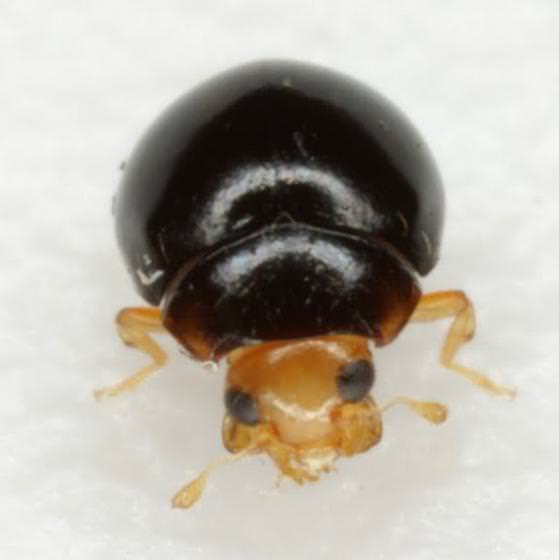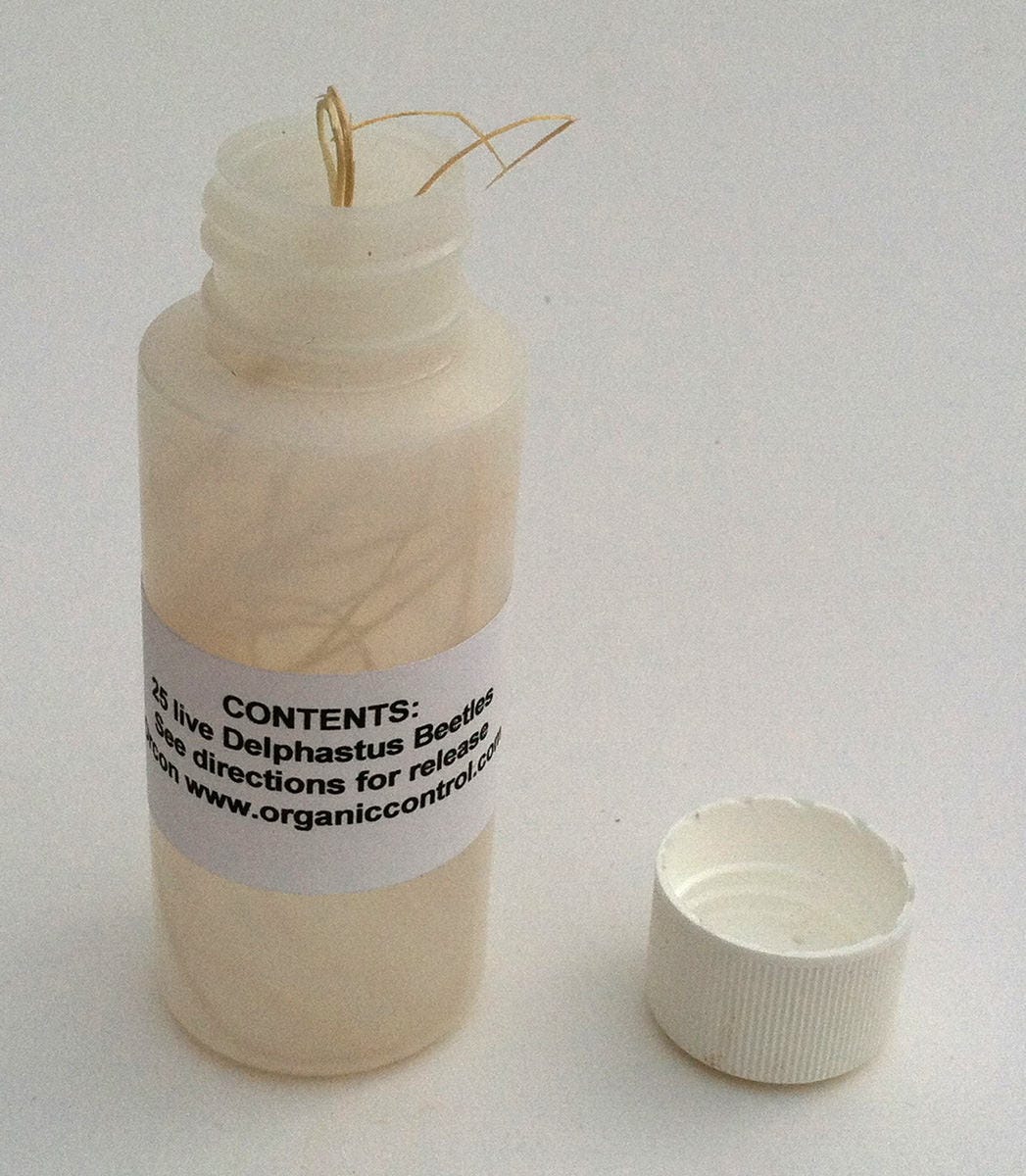


This is for the redemption codes only. When you receive your package go to Orcon Organics Control website to redeem your codes and order your live bugs/insects.
Delphastus is a small, shiny, black beetle, about one quarter the size of a ladybug, which feeds on several species of whitefly including greenhouse, sweetpotato (silverleaf) and avocado whitefly. If whitefly are not present they will also feed on spider mites. Both the adult beetle and larvae are predators and will eat whitefly eggs and larvae, but not adult whiteflies. Each container includes 25 live adults.
USE: Delphastus is a small, shiny, black beetle, about one quarter the size of a ladybug, which feeds on several species of whitefly including greenhouse, sweet potato (silverleaf), and avocado whitefly. If whitefly are not present they will also feed on spider mites. Both the adult beetle and larvae are predators and will eat whitefly eggs and larvae, but not adult whiteflies.
RELEASE: The Delphastus should be released in the cool of the evening, just after sundown. Gently shake them out of the vial in areas of whitefly infestation. If it is very cool during release they will not be moving very much, but their activity will increase with temperature. Be careful they don't all come out on the first shake. If immediate release is not possible, keep them in a cool place but do NOT refrigerate.
COVERAGE: Average coverage is 1 Delphastus per 10 to 25 square feet of planted area, or up to 50 square feet in outdoor landscapes. 25 beetles should cover about 250 to 500 square feet.
LIFE CYCLE: The Delphastus beetle is all black (males have brown heads). The adults live 69 - 90 days and the female lays eggs in clusters of 8 - 12, up to 50 clusters every 2 days depending on available food. The clear eggs hatch into light yellow/green larvae and will begin eating 100 to 200 whitefly eggs per day. After 2 to 3 weeks they form a cocoon and emerge as adults about 6 days later. The adults are capable of eating several hundred whitefly eggs and larvae per day.
RECOMMENDATIONS: Be sure to release the Delphastus at the first signs of white fly. Their activity increases with temperature, but adults can tolerate temperatures from 45 to 100 degrees. Pruning the most affected areas before release is helpful. A wipe down with a mineral or summer oil (food grade) is also beneficial before release. Soapy water may be used as an alternative. This may be repeated after 30 days.
GENERAL INFORMATION: Delphastus works well with other whitefly predators and parasites such as Encarsia Formosa and Green Lacewings and may be used along with them. White fly usually does most of its damage near the top of a plant, you will notice that the Delphastus instinctively move toward the top of the plant in their search for food.
Delphastus is a small, shiny, black beetle, about one quarter the size of a ladybug, which feeds on several species of whitefly including greenhouse, sweetpotato (silverleaf) and avocado whitefly. If whitefly are not present they will also feed on spider mites. Both the adult beetle and larvae are predators and will eat whitefly eggs and larvae, but not adult whiteflies. Each container includes 25 live adults.
USE: Delphastus is a small, shiny, black beetle, about one quarter the size of a ladybug, which feeds on several species of whitefly including greenhouse, sweet potato (silverleaf), and avocado whitefly. If whitefly are not present they will also feed on spider mites. Both the adult beetle and larvae are predators and will eat whitefly eggs and larvae, but not adult whiteflies.
RELEASE: The Delphastus should be released in the cool of the evening, just after sundown. Gently shake them out of the vial in areas of whitefly infestation. If it is very cool during release they will not be moving very much, but their activity will increase with temperature. Be careful they don't all come out on the first shake. If immediate release is not possible, keep them in a cool place but do NOT refrigerate.
COVERAGE: Average coverage is 1 Delphastus per 10 to 25 square feet of planted area, or up to 50 square feet in outdoor landscapes. 25 beetles should cover about 250 to 500 square feet.
LIFE CYCLE: The Delphastus beetle is all black (males have brown heads). The adults live 69 - 90 days and the female lays eggs in clusters of 8 - 12, up to 50 clusters every 2 days depending on available food. The clear eggs hatch into light yellow/green larvae and will begin eating 100 to 200 whitefly eggs per day. After 2 to 3 weeks they form a cocoon and emerge as adults about 6 days later. The adults are capable of eating several hundred whitefly eggs and larvae per day.
RECOMMENDATIONS: Be sure to release the Delphastus at the first signs of white fly. Their activity increases with temperature, but adults can tolerate temperatures from 45 to 100 degrees. Pruning the most affected areas before release is helpful. A wipe down with a mineral or summer oil (food grade) is also beneficial before release. Soapy water may be used as an alternative. This may be repeated after 30 days.
GENERAL INFORMATION: Delphastus works well with other whitefly predators and parasites such as Encarsia Formosa and Green Lacewings and may be used along with them. White fly usually does most of its damage near the top of a plant, you will notice that the Delphastus instinctively move toward the top of the plant in their search for food.



